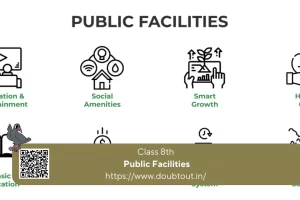
NCERT Solutions for Class 8 History Chapter 3 Ruling the Countryside (updated pattern)

Chapter 3 Ruling the Countryside of NCERT Solutions for Class 8 History deals with the East India Company (EIC) taking over the Bengal administration. Further, students will read about how East India Company acquired the Diwani rights, starting with Robert Clive, who accepted the Diwani of Bengal, Bihar and Orissa from the Mughal ruler in 1765. Accurate answers to all the textbook questions can be accessed by students online or in PDF versions, available for free download. Students can utilise these resources to strengthen their conceptual knowledge
Exercises
1. Match the following.
| Ryot | Village |
| Mahal | Peasant |
| Nij | Cultivation on ryot’s lands |
| Ryoti | Cultivation on planter’s own land |
Answer.
| Ryot | Peasant |
| Mahal | Village |
| Nij | Cultivation on planter’s own land |
| Ryoti | Cultivation on ryot’s land |
2. Fill in the blanks.
(a) Growers of woad in Europe saw __________ as a crop which would provide competition to their earnings.
(b) The demand for indigo increased in late eighteenth-century Britain because of __________.
(c) The international demand for indigo was affected by the discovery of __________.
(d) The Champaran movement was against __________.
Answer.
(a) Growers of woad in Europe saw indigo as a crop which would provide competition to their earnings.
(b) The demand for indigo increased in late eighteenth-century Britain because of the expansion of cotton production.
(c) The international demand for indigo was affected by the discovery of synthetic dyes.
(d) The Champaran movement was against indigo planters.
SPARK OF CHANGE: HOW ELECTRIC VEHICLES ARE SHAPING TOMORROW’S TRANSPORTATION
3. Describe the main features of the Permanent Settlement.
Answer.
The Permanent Settlement System was a land revenue system introduced in 1793 by the East India Company. Rajas and taluqdars were recognised as zamindars to collect rent from the peasants and pay revenue to the Company. The main features of the Permanent Settlement system are:
a. The amount paid by the zamindars to the company was fixed permanently.
b. The Rajas were made the zamindars.
c. Zamindars lost their right over the lands whenever they failed to make payments to the company.
d. Exorbitant prices of land which Zamindars had to pay to the company (which they failed).
4. How was the Mahalwari System different from the Permanent Settlement?
Answer.
Differences between the Mahalwari System and Permanent Settlement are given below.
| Mahalwari System | Permanent Settlement |
| Holt Mackenzie devised it, and it came into effect in 1822 | Permanent Settlement was brought by Lord Cornwallis in 1793 |
| The epicentre of the system was a village | There was no such epicentre |
| Villages were called ‘Mahal’ | – |
| The estimated revenue of each plot within a village was added up to calculate the revenue that each village (mahal) had to pay | The revenue was fixed that each zamindar had to pay to the company |
| The revenue was to be revised periodically | Revenue was fixed |
| The charge to collect the revenue was on the village headman | The charge to collect the revenue was on the village zamindar (rajas/taluqdars) |
5. Give two problems which arose with the new Munro system of fixing revenue.
Answer.
The new Munro system of fixing revenue posed two problems:
a. The revenue demand was fixed way too high for peasants to pay.
b. Peasants could not pay the rent, which culminated in deserted villages.
6. Why were ryots reluctant to grow indigo?
Answer.
The ryots were reluctant to grow indigo for the below-given reasons:
a. They were paid very low prices for it.
b. The ryots never saw any profit accruing from the indigo plantation.
c. Ryots were asked to grow indigo on the fertile parts of their land by the planters, which they were apprehensive about.
7. What were the circumstances which led to the eventual collapse of indigo production in Bengal?
Answer.
The collapse of indigo production in Bengal was caused by the following circumstances:
a. Ryots’ denied producing the indigo anymore.
b. Protests started taking place by the peasants/ryots supported by the zamindars.
c. Following the protests, the Indigo Commission was constituted by the government, which accepted the faults of the planters and asked the planters to stop the cultivation.
d. Planters eventually moved out of the city.
Tag:Class 8th, History, Social Science



